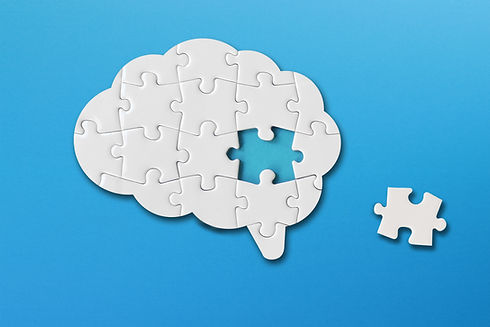Neurodiverse Learners
Neurodiversity refers to the concept that neurological differences among people should be recognized and respected as a natural variation in the human genome, rather than explicitly viewed as disorders or deficits. A neurodiverse learner is someone whose brain processes, learns, and/or interprets information differently from what is considered "neurotypical." Neurodiverse learners often have unique strengths alongside their challenges. They may excel in areas such as pattern recognition, creative thinking, problem-solving in unique ways, hyperfocusing on areas of interest, or detailed memory. Educational approaches that recognize and accommodate these differences can help neurodiverse learners thrive by leveraging their strengths while providing support for areas of difficulty.
Conditions that are most commonly included under the neurodiversity umbrella include, but are not limited to, the following:
-
Attention-Deficit/Hyperactivity Disorder (ADHD)
-
Specific Learning Disorder (SLD)
-
Autism Spectrum Disorder (ASD)


Attention Deficit/
Hyperactivity Disorder (ADHD)
ADHD is a condition that affects how a person pays attention, sits still, and controls their impulses. It is not about being lazy or bad; it’s about how the brain is wired to work differently.
People with ADHD often have trouble focusing on things that don’t interest them, get distracted easily, and may jump from one task to another without finishing. They might daydream often, lose things, or forget what they were doing.
There are also people with ADHD who feel like they have a motor running inside them all the time. They may feel restless, need to move, fidget, or have trouble sitting still, especially in quiet settings.
ADHD is not a choice, and it’s not caused by bad parenting or too much sugar. It is believed to be linked to how certain chemicals in the brain work, and it often runs in families. While ADHD can make school, work, and relationships challenging at times, people with ADHD often have many strengths, such as creativity, big-picture thinking, the ability to hyper-focus on things they find interesting, and lots of energy that can be used positively.
Treatment for ADHD often includes behavioral strategies, support at home and school, lifestyle changes, and sometimes medication to help manage focus and impulsivity.

Specific Learning Disorder (SLD)
SLD means that a person has trouble learning certain skills, even when they are trying hard and getting help. It is not about intelligence—people with SLD are just as smart as others, but their brains process information in a different way, making it harder for them to learn certain things.
SLD can affect:
Reading (like reading slowly, having trouble sounding out words, or understanding what was read). Dyslexia is the diagnosis associated with a reading disability.
Writing (like spelling, organizing thoughts on paper, or using correct grammar). Dysgraphia is the diagnosis associated with a writing disability.
Math (like understanding numbers, learning math facts, or solving word problems). For example, a child might read much more slowly than classmates, have difficulty remembering multiplication facts, or find it hard to write down ideas even if they can say them clearly. Dyscalculia is the diagnosis associated with a math disability.
SLD is not caused by poor teaching, lack of effort, or laziness. It is a neurological difference that often runs in families. With the right support—like specialized teaching strategies, practice, and sometimes accommodations at school—people with SLD can learn and thrive, using their many other strengths to succeed in school and life.

Autism (ASD)
ASD is a condition that affects how a person understands and interacts with the world around them. People with autism often have differences in social communication, which means they may:
-
Find it hard to understand social rules (like making eye contact or knowing when to take turns in conversation)
-
Have difficulty understanding jokes, sarcasm, or body language
-
Prefer playing or working alone, or only with certain people
They may also have repetitive behaviors or specific interests, such as:
-
Doing the same activity over and over
-
Wanting things to stay the same and becoming upset with changes
-
Having strong interests in certain topics
People with autism may also experience sensory differences, like being very sensitive to loud noises, bright lights, or certain textures, or they may seek out certain sensory experiences like spinning or touching specific objects.
Autism is called a “spectrum” because it looks different in each person. Some people need a lot of support with daily life, while others live independently but may still find social situations challenging. It is not caused by parenting or vaccines and is believed to be related to brain development and genetics.
People with autism often have many strengths, such as being detail-oriented, honest, having good memory for facts, and deep knowledge about things they are interested in. With understanding, support, and acceptance, individuals with autism can thrive and contribute greatly to their families and communities.
Free Resources
Mental Health


Learning Disabilities
Some examples of learning disabilities include but are not limited to:
-
Reading Disabilities (such as Dyslexia)
-
Writing Disabilities (such as Dysgraphia)
-
Mathematical Disabilities (such as Dyscalculia)

Additional Resources
-
Understood: A Website of Resources for parents and educators
-
988: National Suicide Hotline
Also, here are some great films I'd like to encourage you to see about children who struggle with unique learning challenges. Some options are free to the public and some are available through their providers.
-
The Disruptors: Film about children with ADHD
-
The Reason I Jump: Documentary of children with Autism
-
Paper Tigers: Documentary of children within a trauma-sensitive school setting
-
Hiding in Plain Sight: Documentary about the youth mental health crisis in America

